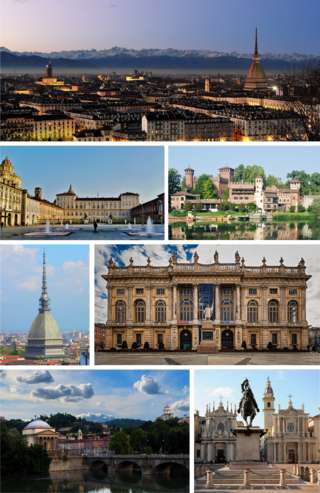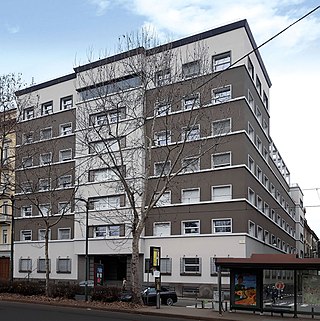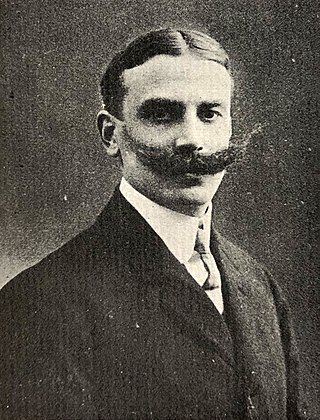
Liberty style was the Italian variant of Art Nouveau, which flourished between about 1890 and 1914. It was also sometimes known as stile floreale, arte nuova, or stile moderno. It took its name from Arthur Lasenby Liberty and the store he founded in 1874 in London, Liberty Department Store, which specialized in importing ornaments, textiles and art objects from Japan and the Far East. Major Italian designers using the style included Ernesto Basile, Ettore De Maria Bergler, Vittorio Ducrot, Carlo Bugatti, Raimondo D'Aronco, Eugenio Quarti, and Galileo Chini.

Raimondo Tommaso D’Aronco (1857–1932) was an Italian architect renowned for his building designs in the style of Art Nouveau. He was the chief palace architect to the Ottoman Sultan Abdülhamid II in Istanbul for 16 years.

Turin is a city and an important business and cultural centre in Northern Italy. It is the capital city of Piedmont and of the Metropolitan City of Turin, and was the first Italian capital from 1861 to 1865. The city is mainly on the western bank of the Po River, below its Susa Valley, and is surrounded by the western Alpine arch and Superga Hill. The population of the city proper is 847,287 while the population of the urban area is estimated by Eurostat to be 1.7 million inhabitants. The Turin metropolitan area is estimated by the OECD to have a population of 2.2 million.

Ettore Tito was an Italian artist particularly known for his paintings of contemporary life and landscapes in Venice and the surrounding region. He trained at the Accademia di Belle Arti in Venice and from 1894 to 1927 was the Professor of Painting there. Tito exhibited widely and was awarded the Grand Prize in painting at the 1915 Panama–Pacific International Exposition in San Francisco. In 1926 he was made a member of the Royal Academy of Italy. Tito was born in Castellammare di Stabia in the province of Naples and died in Venice, the city which was his home for most of his life.

Palazzo Castiglioni is an Art Nouveau palace of Milan, northern Italy. It was designed by Giuseppe Sommaruga in the Liberty style and built between 1901 and 1903. The rusticated blocks of the basement imitate a natural rocky shape, while the rest of the decorations are inspired by 18th century stuccos. The building is now used as the seat of the Unione Commercianti di Milano.

The Palazzo Gualino is an office building in Turin, Italy built in 1928–30 for the entrepreneur Riccardo Gualino by the architects Gino Levi-Montalcini and Giuseppe Pagano. It is an important example of early Italian rationalist architecture. The building was used for offices first by Gualino, then by Fiat and finally by the city of Turin, who sold it to a real estate developer in 2012. A project to convert the office building into high-end apartments was begun in 2012, but was abandoned in 2015.
Francesco Maria Mirabella was an Italian historian, educator, and poet.

The following outline is provided as an overview of and topical guide to Turin:

Casa Guazzoni is a building at via Malpighi 12 in Milan in the Liberty style, or Italian Art Nouveau.

Alik Cavaliere was an Italian sculptor. He spent his life researching the meaning of life, freedom, nature, and history. Atheist and libertarian since generations, he didn't believe in any preconceived, final structure of the society, the environment, or the whole universe. Neither he followed any art movements of his times, although he knew all of them and was temporarily influenced by some. He strove along his own way, narrating his perceptions with witty irony, through sculptures made up of a wide range of materials, disposed in a chaotic labyrinth which visitors are forced to traverse without being able to find a definitive point of view.

Sebastiano Giuseppe Locati was an Italian architect. He became famous at the turn of the twentieth century for his efforts in designing structures in eclectic and Art Nouveau styles.

Pietro Fenoglio was an Italian architect and engineer, considered one of the most important pioneers of Art Nouveau in Italy.

Giovanni Michelazzi was an Italian architect and one of the most important exponents of the Liberty style in Tuscany.

The Casa della Vittoria is a building northwest of the city center of Turin, Piedmont, Italy, considered one of the most interesting examples of residential architecture in a Medieval-revival style in the Piedmontese capital. Located in the district Cit Turin, the Casa della Vittoria is at the center of an area of great architectural interest that contains a high density of Art Nouveau and Gothic Revival buildings, including also the nearby church of San Donato.

Villa Zanelli is an historical building located in Savona, Liguria, Italy. The building is an example of the Liberty style of residential architecture, and was completed in 1907 for the Zanelli family. Designed by the architect Gottardo Gussoni from Turin, it is close to the Tyrrhenian Sea beach in the Legino district of Savona.

Alessandro Mazzucotelli was an Italian craftsman, particularly known as a master ironworker and decorator. A specialist in wrought iron, Mazzucotelli linked his fame to the decorations of the works of the major exponents of Art Nouveau in Italy and abroad.

Casa Scaccabarozzi, commonly known as Fetta di Polenta, is a historic building located in the Vanchiglia neighborhood of the northern Italian city of Turin. It is famous for its unusual and very thin trapezoidal plan and for being only 54 centimetres (1.77 ft) at its narrowest. Its primary nickname due to its resemblance to the shape to a slice of polenta.

Art Nouveau in Milan indicates the spread of such artistic style in the city of Milan between the early years of the 20th century and the outbreak of the First World War. In the Lombard capital, art nouveau, called StileLiberty in Italian, found—thanks to its close relationship with the rampant industrial bourgeoisie of the time—a fertile ground for its rapid development, during which it oscillated between the influences of French Art Nouveau, German Jugendstil and eclecticism.

The Church of Jesus of Nazareth, Turin is a Catholic church in the Cit Turin district of central Turin, Piedmont, Italy, designed by Giovanni and Bartolomeo Gallo and built between 1904 and 1929 on the Piazza Benefica.

The Villa Scott is a historic house located in a prestigious hillside location in the Cavoretto district in the larger Borgo Crimea east of central Turin, Piedmont, Italy. Built in 1902, it is considered to be a masterful example of Liberty Style architecture in Turin, one of the major works of the architect, engineer, and businessman Pietro Fenoglio.



















